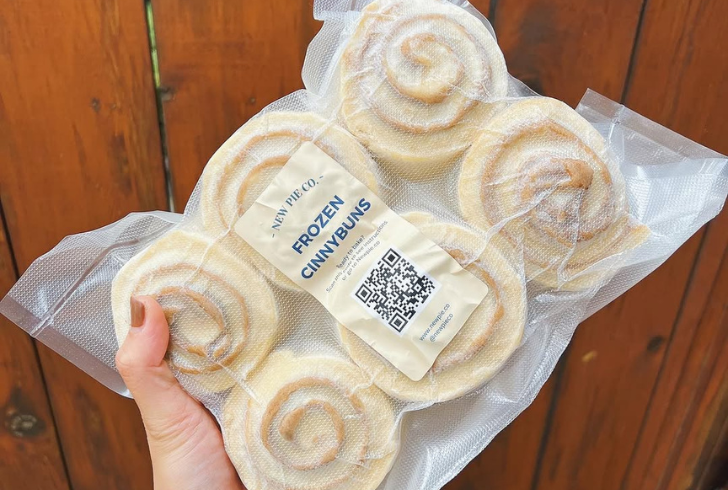Grocery prices seem to be climbing every time you shop, making it harder to stick to a budget. If you’re tired of watching your total rise at checkout, it’s time to rethink the way you shop. With the right strategies, you can cut costs without sacrificing quality or variety.
From smart shopping habits to money-saving tricks, here’s how to lower your grocery bill and keep more cash in your pocket.
1. Avoid Peak Shopping Hours
Grocery stores tend to be busier during weekends and evenings, making it harder to navigate the aisles and compare prices. Shopping during quieter times allows for better decision-making and less pressure to grab the first item available.
Early mornings or weekday afternoons often provide the best chance to find well-stocked shelves and take advantage of markdowns without the hassle of long lines.
2. Always Shop with a List

Freepik | seventyfour | A grocery list curbs impulse spending and waste by prioritizing essential purchases.
Walking into a grocery store without a plan often leads to impulse purchases and wasted money. A well-thought-out list helps keep spending in check by ensuring only necessary items make it into the cart.
Instead of grabbing items that seem appealing at the moment, a list keeps the focus on essentials. Sticking to it also prevents multiple trips, reducing gas costs and the temptation to buy more than needed.
3. Choose Frozen Over Fresh When Possible
Frozen foods often cost less than their fresh counterparts and have a longer shelf life. Many frozen fruits and vegetables retain their nutrients since they are preserved at peak freshness. Items like seafood and poultry can also be a better bargain in frozen form. Stocking up on frozen options reduces food waste, as they won’t spoil as quickly as fresh items.
4. Shop on the New Sales Day
Most grocery stores introduce new sales on a set day each week, making it the best time to shop for deals. Buying items at the start of a sale ensures a better selection before popular discounts sell out. Checking store flyers or online ads helps pinpoint the exact day discounts begin, making it easier to plan grocery trips around the best prices.
5. Opt for Generic Brands
Store-brand products usually contain the same ingredients as name-brand alternatives but come at a lower price. Many shoppers hesitate to switch, assuming the quality isn’t the same.
However, generic brands often undergo the same manufacturing process as their pricier counterparts. Comparing ingredients and testing different options can reveal budget-friendly choices without sacrificing taste or quality.
6. Buy Bread and Baked Goods That Can Be Frozen

Instagram | newpieco | To minimize waste, freeze bakery products for prolonged freshness and portioned use.
Fresh bakery items often spoil before they’re fully consumed, leading to unnecessary waste. Freezing bread, muffins, and other baked goods helps preserve freshness while allowing for portioned use over time. Many brands offer freezer-friendly options, making it simple to store baked goods without compromising taste or texture.
7. Grocery Shop Alone to Avoid Impulse Buys
Shopping with family or friends increases the likelihood of adding extra, unnecessary items to the cart. Children may ask for snacks, and partners might throw in additional treats, quickly inflating the total bill. Shopping alone makes it easier to stay focused and stick to the list without distractions or impulse spending.
8. Buy Produce in Season
Seasonal fruits and vegetables tend to be more affordable and flavorful. When produce is in abundance, prices drop, making it the perfect time to buy in bulk and freeze extras for later. Local farmers' markets and grocery stores offer the best seasonal deals, ensuring fresh, high-quality ingredients at a fraction of the cost.
9. Focus on Discounts for Essentials Only
Scanning an entire store flyer for deals can lead to unnecessary purchases. Instead, focusing only on discounts for frequently used essentials helps save money without overloading the pantry. Checking for sales on staple items like rice, pasta, or toiletries ensures that money is spent wisely rather than on products that weren’t originally needed.
10. Use Store Rewards and Loyalty Programs
Many grocery stores offer loyalty cards that provide discounts, coupons, and even cashback rewards. Signing up for these programs can lead to significant savings, especially when combined with weekly sales. Some rewards programs also offer fuel discounts, making it possible to save on groceries and gas simultaneously.
11. Buy in Bulk for Long-Term Savings

Freepik | Unit costs decrease when non-perishable or freezer items are bought in larger amounts.
Purchasing larger quantities of non-perishable or freezer-friendly foods often results in lower costs per unit. While bulk shopping may require a larger upfront payment, it reduces the frequency of grocery store trips and helps lock in lower prices for essential items. Staples such as rice, beans, and canned goods remain fresh for extended periods, making them ideal for bulk purchases.
12. Choose Gallons Over Half-Gallons for Better Value
Buying larger sizes of commonly used items, like milk or juice, typically offers a better price per ounce. While a full gallon may seem excessive, it lasts longer and prevents extra trips to the store. Checking expiration dates ensures that the larger quantity will be used before it spoils, maximizing savings over time.
Making thoughtful choices while grocery shopping leads to noticeable savings over time. By planning ahead, focusing on essential discounts, and taking advantage of store perks, food costs can be managed more effectively. Simple habits like shopping with a list, buying in bulk, and choosing store brands can make a big difference in stretching a grocery budget without sacrificing quality.




